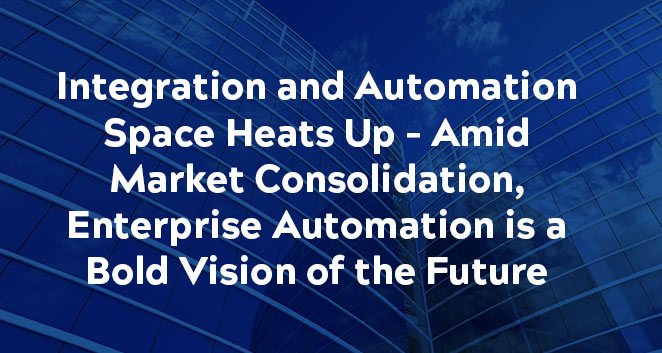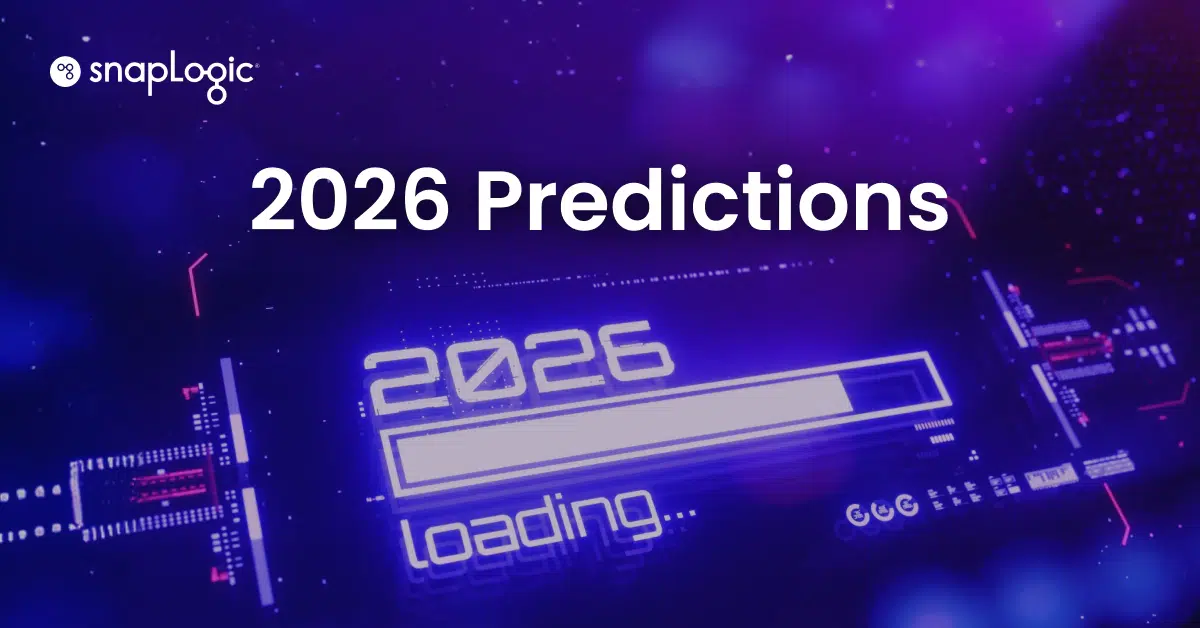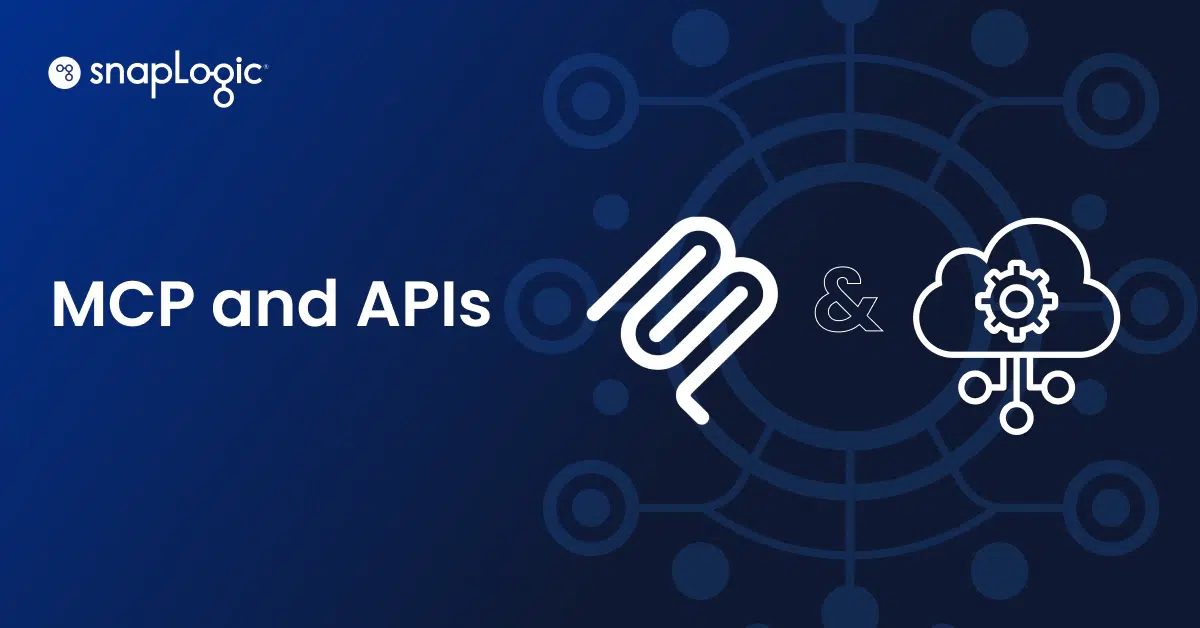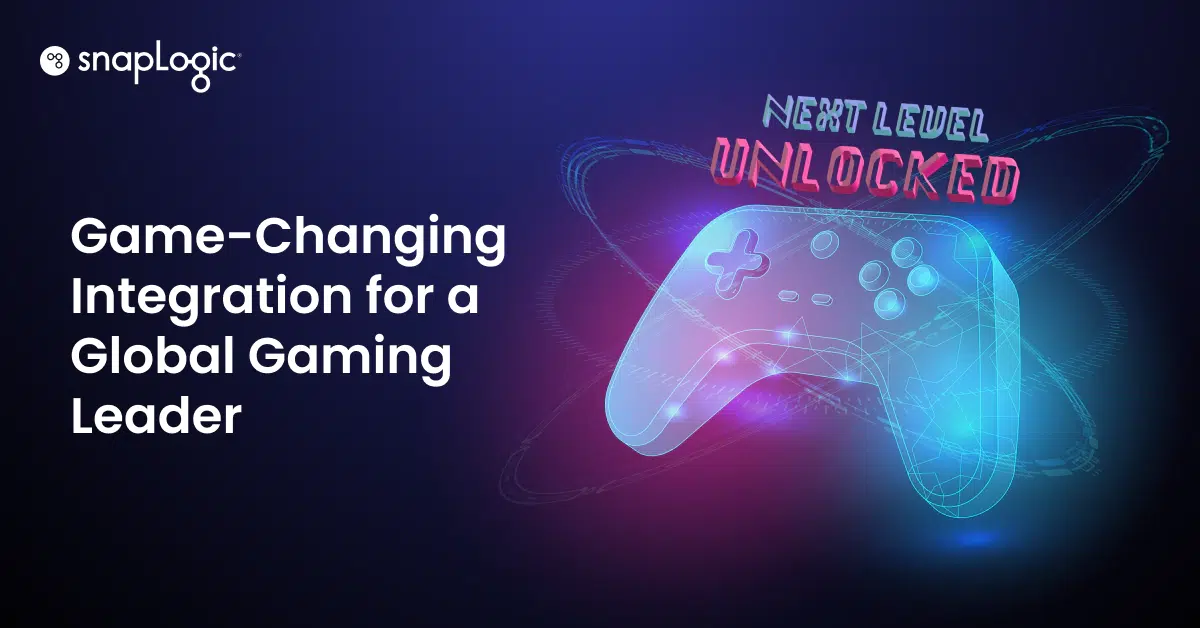Last year we launched our vision for the Enterprise, inspired by the amazing work our customers are doing, where intelligent, multi-function data and application integration, and intuitive useability for both IT and lines of business users, come together to deliver significant productivity and agility impacts. We call this Enterprise Automation.
Since launching our Enterprise Automation reference architecture last year (see image below), we’re seeing more and more industry validation for this vision, as adjacent technologies and vendors (RPA for example) realize you need more than a point solution to solve the challenges of the modern enterprise. These technologies alone are not delivering.
That’s why we’re seeing a rash of industry consolidation and other notable moves this month by vendors looking to shore up their enterprise automation capabilities and portfolios. This weeks’ news of the Uipath (a RPA solution provider) acquisition of Cloud Elements (an API solution provider), along with a number of other similar M&A and partnership announcements of late, show that a better solution is needed.
We see this as an exciting testament of our vision and a great time to be in this market. I will explain why.

Why now?
As organizations step up their automation game, moving from isolated one-off projects to a flexible and robust enterprise-wide strategy, they’re honing in on the platforms and technologies that will enable them to truly achieve automation at scale. Much-hyped point technologies may work for specialized projects but too often they won’t scale as you expand to different and bigger projects across the enterprise. We’ve seen this play out time and again – customers hit a wall, end up buying more tools to fix different problems, only to find out they don’t work well together, leaving a patchwork of disconnected tools that are far less than the sum of their parts. As a result, their enterprise automation strategies grind to a halt.
What does all this mean for customers?
The good news: automation is real and is helping organizations to see around corners, flex and adapt as needed, and run faster in order to scale up and seize the moment, especially in times of rapid change. Our own recent research bears this out – of the enterprises we surveyed last month, 78% have committed to increasing their spend on automation initiatives, with about half saying they fast-tracked their automaton projects as a result of the pandemic. (More on this new research next week).
Organizations can no longer afford to invest in point solutions with limited functionality that can’t scale and instead want a single, unified, scalable platform that can underpin many, if not all, of their enterprise automation projects. An AI-enabled, low-code platform that can be used by both IT and lines of business and is fully equipped to handle the gamut of complex automation requirements, including app integration (iPaaS), data integration (including ELT/ETL), workflow, and business process management, API management, AI/MLOps, and yes, can easily connect to important endpoints including RPA.
A strategy and architecture is one thing, but how does this play out in the real world?
We are seeing our customers take advantage of the automation opportunity in a variety of ways. SailPoint for example is using this vision to drive down its helpdesk workload by 30% with SnapLogic integration and automation.
Another example is Brown Shoes, a Canadian shoe retailer, who saw a 300% spike in online sales due to 68 store closures early in the pandemic crisis and needed to shift their IT focus to support more online sales. In less than two days, empowered with SnapLogic, Brown Shoes added new applications and processes to support its distribution centers. With automated processes, they are able to process returns directly from their distribution centers where returns were previously processed at their stores.
You need only do a quick internet search to see references to PWC, KPMG, and many other leading accounting firms that support the prediction that “by 2025, AI will be doing your taxes.” Customers of SnapLogic are successfully on that journey today. The combination of the right AI-enabled tools is bringing the value of augmented human intelligence to deliver faster, more accurate, and ultimately more cost-effective tax filings for both individuals and corporations.
Through our focus on powerful, enterprise-grade capabilities and ease-of-use, we see other pioneers of enterprise automation like T. Rowe Price, AstraZeneca, Adobe, Pitney Bowes, and other Global 1000 companies empower thousands of SnapLogic users to build their own integrations, automate processes, and accelerate business results.
Achieving automation at scale is no easy feat and is not a one-and-done thing, but the right platform can set you up for success. You can read more on our enterprise automation vision and product roadmap, which our CEO outlined in this post last year.
To learn how the SnapLogic Intelligent Integration Platform can power your enterprise automation strategy, request a demo or contact us.










